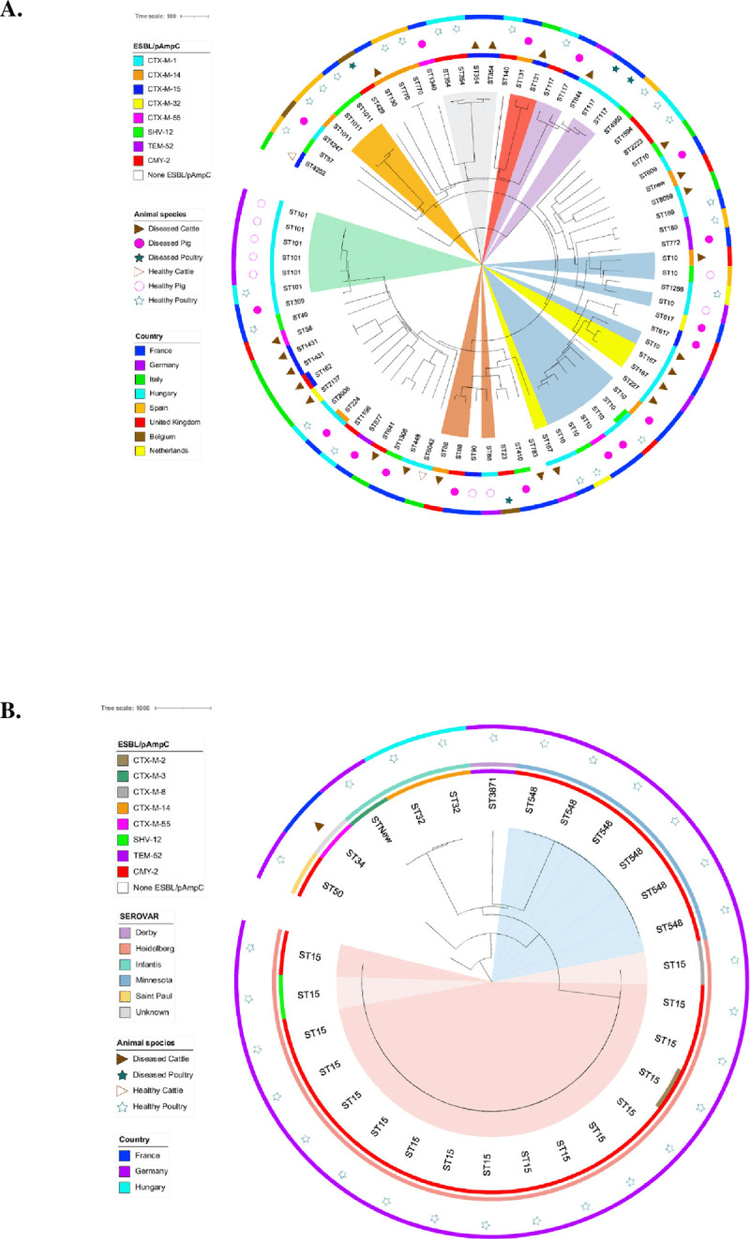Genome analysis of third-generation cephalosporin-resistant Escherichia coli and Salmonella species recovered from healthy and diseased food-producing animals in Europe
ABSTRACT
BACKGROUND
The animal reservoir of Enterobacterales producing Extended-Spectrum-β-Lactamases (ESBL) and plasmid-borne cephalosporinases (pAmpC) is a global concern.
METHODS
Using genome data, we analyzed a population of Escherichia coli and Salmonella species resistant to third-generation cephalosporins (3GC-R) recovered from healthy food animals (HA) and diseased food animals (DA) across Europe. Among the isolates collected from HA (n = 4,498) and DA (n = 833) in up to twelve European countries, 62 (1.4%) and 45 (5.4%) were 3GC-R, respectively. The genomes of these 3GC-R 107 isolates were sequenced to identify blaESBL and blaAmpC, sequence types (STs), virulence-associated genes, and Salmonella serovars. We also assessed their population structure using core genome multilocus sequence typing.
RESULTS
The 78 3GC-R Escherichia coli originated from poultry (n = 27), swine (n = 26), and cattle (n= 25). Almost all (n = 77; 98.7%) harbored at least one blaESBL or blaAmpC, with blaCTX-M-1 predominating. We identified 51 STs, with ST10 and ST101 being the most frequent. The population of 3GC-R E. coli was polyclonal. The 29 3GC-R Salmonella spp. were mostly retrieved from healthy broiler (96.5%). blaCMY-2 dominated in this population. We found two clusters of CMY-2-producing Salmonella spp. in Germany: one with 15 isolates of S. Heidelberg isolates and another with six S. Minnesota, all of them with blaCMY-2.
CONCLUSION
Our results confirm the low prevalence of 3GC-R E. coli and Salmonella spp. in HA and DA. blaCTX-M-1 was dominating in a highly diverse population of E. coli. 3GC-R E.coli isolated from HA and DA were genetically unrelated, with high clonal diversity suggesting multiple origins of contamination. This contrasted with the clonal population of 3GC-R Salmonella spp. in which blaCMY-2 dominated through two dominant serovars in this collection.
